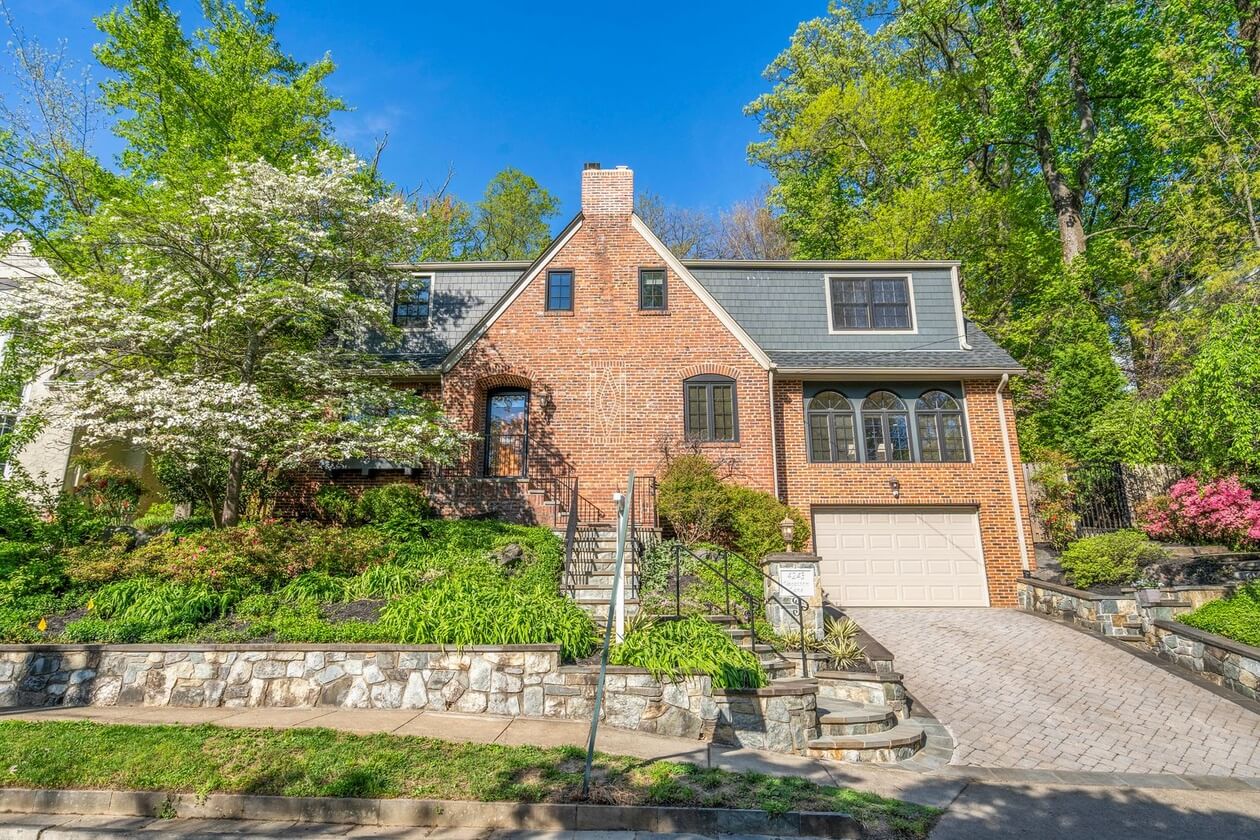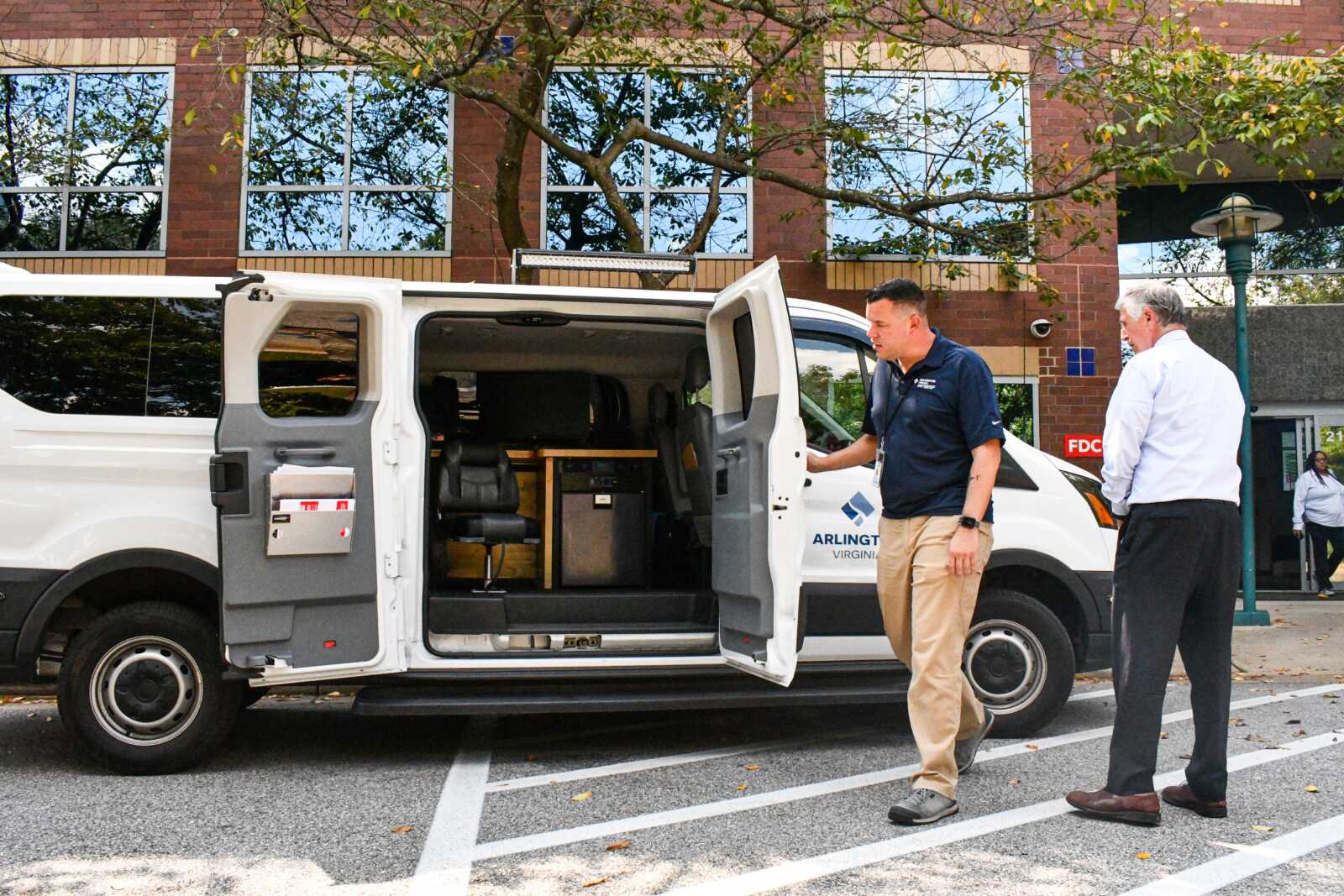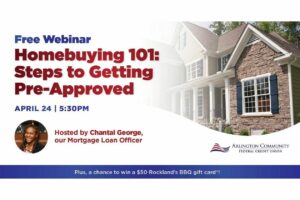Thomas Peters and his wife Natalie found the perfect home in Arlington — one that already had an elevator that Thomas would need to get around in his wheelchair.
It did have one downside, however. The trees on his neighbor’s property, which is at a higher elevation, block natural light from reaching his backyard.
That poses a problem for Peters, whose spinal cord injury — sustained while swimming 10 years ago — left him paralyzed and made it harder for his body to regulate his temperature and stay healthy. The need for accessible sunlight became obvious during the pandemic when he was stuck in his apartment.
“UV light is the best disinfectant and it is hard to get in the wintertime,” he said. “I knew I wanted a place where I could live in the sunlight.”
So Peters commissioned an architect to draft plans for a sunroom. Before those could be realized, however, he learned he would have to get special permission to build it because the home already exceeds the allowable size for a main building on a 10,000-square-foot lot, according to the zoning code.
The last 15 months became a winding legal process that frustrated Peters at times.
“My journey of living with a disability has been one of losing lots of agency,” he said. “I’m a very go-getter type of guy. One of the most frustrating things about living with a handicap is that there are things you just can’t overcome. It’s especially frustrating when you can’t overcome things in your own home after pursuing the dream of independent living.”
Last Wednesday, however, his vision for the property eventually prevailed. He he got the go-ahead for the sunroom when the Board of Zoning Appeals (BZA) unanimously greenlit a variance for the site. The citizen commission considered not just local zoning ordinances but also the Americans with Disabilities Act and ultimately acted against a recommendation by county staff to deny his request.
ARLnow reached out to some of the five BZA members but did not hear back before deadline.
Barnes Lawson, the lawyer for Peters, said last week’s decision was a rare one that resolved a cordial disagreement with the county over what constitutes a reasonable accommodation for a disability.
“Zoning Division staff does not believe that the applicants have proven an explicit connection between the requested size of the proposed improvements and their ability to remedy a hardship, as they have not shown that the benefits provided by the proposed conservatory could not also be provided elsewhere in the dwelling,” according to a county report.
In a county report, staff emphasized that the Peters home already exceeds the maximum lot coverage allowable for a main building on a lot of its size. The county offered Peters two paths forward that would not require a variance.
He could build a front porch of at least 60 square feet and earn the right to extend the footprint of his house by 3%. The zoning code encourages the construction of front porches — and, as another example, discourages garages near the front of the house — as a way to promote neighborly interactions.
Alternatively, he could also build a detached sunroom. Since his home takes up 29.4% of the lot, he could build a detached sunroom up to 285 square feet, while staying under an overall lot coverage maximum of 32%.
But Peters says these options do not work for his disability and it would be easier to promote the neighborly interactions in a sunroom he can access than on front porches he may not be able to access due to steps.
“They came back and they said, ‘Here’s what you can do.’ I had to explain to them what I can and cannot do,” he said. “That’s a tough position to put anyone with a handicap in.”
Though Peters prevailed in this instance, the incident does raise questions about how the county is supposed to treat lot coverage. This is one of the top issues the County Board and some in the community have called on staff to study and potentially revise in the shadow of the Missing Middle changes.
While the footprint of these multiplexes will not be able to exceed what is allowed for single-family homes, many community members said the changes failed to address one top concern with development: homes that cover large portions of their lots, which they say results in tree loss and worse flooding.
For Barnes and Rosemary Ciotti — a local advocate for people with disabilities — the result of the decision is monumental for other reasons. They say it could set a new tone for how the community approaches reconfiguring homes for people with mobility impairments and elderly homeowners.
“Your typical Arlington house is upstairs bedrooms, downstairs kitchen,” Lawson said. “If people age in place, they bump into coverage restrictions. In order to have one floor to live in, they have to seek variances for the amount of coverage.”
Ciotti said the time was ripe for this conversation after the Arlington County Board approved the by-right construction of 2-6 units on lots previously zoned for single-family homes. The “Missing Middle” changes had the support of the Disability Advisory Commission, which argued these changes could make it easier for people with disabilities to live independently and receive care.
“We push people with disabilities out of the community all the time with zoning barriers and economics,” Ciotti said. “I felt this was very much in keeping with the mission of making Arlington more inclusive — for them to walk the walk and not just talk the talk.”
Recent Stories

For Immediate Release
Progress for All Announces Inaugural Black Men Vote Virtual Town Hall
Date: April 19, 2024
Contact: Marc M. M. Peters

The Award is available to recent high school graduates and non-traditional students (see the application for more details). Each recipient may be awarded up to $20,000. Applicants are required to submit an online application form as well as a short video application.
The applicant must be an Arlington resident pursuing a career or technical education accredited program, within a high-growth career, that will be completed within two years.
The careers and programs include, but are not limited to:
-
Audio, Video, and Sound Engineering Technicians
-
Broadcast Technicians
-
Commercial Drivers
-
Culinary Arts
-
Early Childcare Education
-
Healthcare
-
Information Technology and Computer Science
-
Manufacturing and Skilled Trades (including welding, auto and aviation mechanics and technicians)
-
Public Safety
ACFCU’s Free Homebuying 101 Webinar: Steps to Getting Pre-Approved
Are you ready to jump into homeownership, or have you started considering it but don’t know where to start?
Financial preparation is key when thinking about purchasing your first home and the first step to getting pre-approved. Join ACFCU for
Sweeney Todd
A victim of a gross injustice that robbed him of his wife and child, Sweeney Todd sets about exacting a terrible revenge on society.







